|
John Tyman's Cultures in Context Series NEPAL |
|
|
|
244-277 |
|
John Tyman's Cultures in Context Series NEPAL |
|
|
|
244-277 |
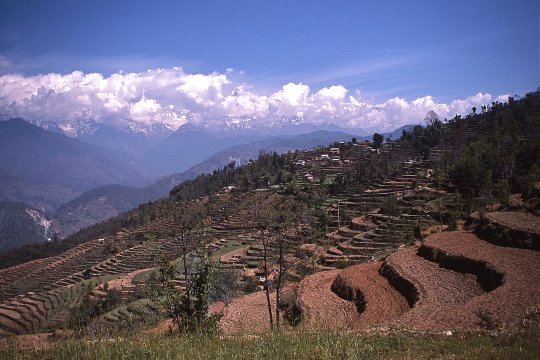 |
| 244. While altitude itself is not a problem in the Midlands, not like it is in the high country to the north, there is very little level land here. [Video Extract 01] |
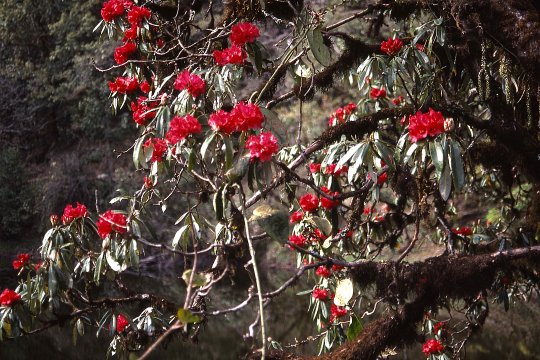 |
| 245. In addition to being warmer, much of this hill country is also better watered, and it was forested prior to settlement. (Rhododendrons at Chitre) |
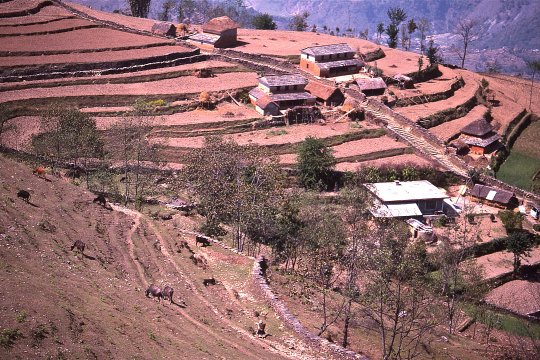 |
| 246. There are significant variations in rainfall even here, though, depending on exposure: and leeward slopes, as usual, are significantly drier. |
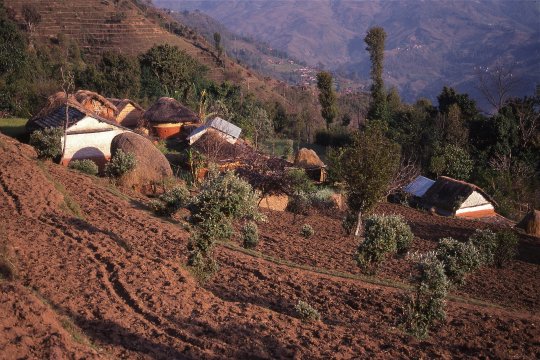 |
| 250. The village has a population of almost one hundred : but many more people live on farms close by, set into the terraced slopes below. |
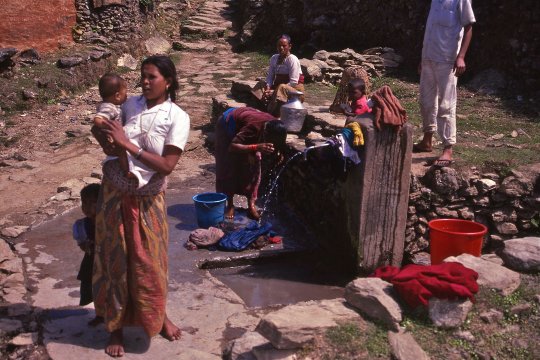 |
| 252. And, given Brahman commitment to ritual purity, it was only to be expected that the lower castes should have a source of water separate from that used by Brahmans and Chetris. |
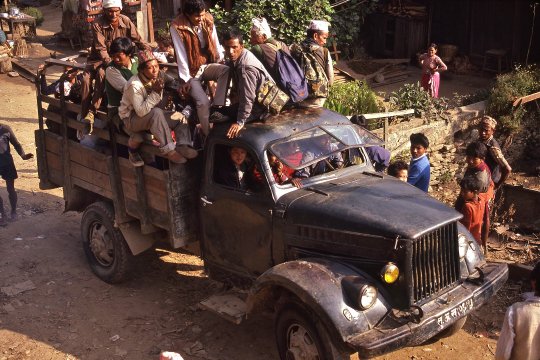 |
| 253. To reach Ramja Thanti it is now possible to get a taxi of some sort to carry you half way, along a new road which follows river valleys westwards from Pokhara. |
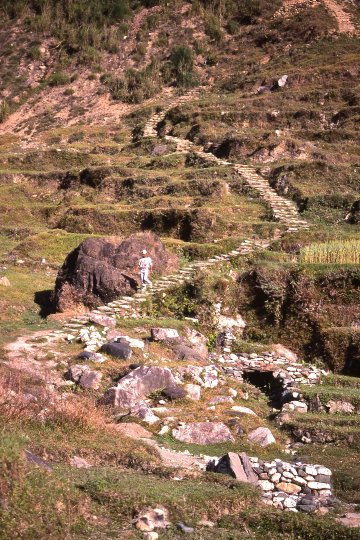 |
| 254. After that we had to walk, on trails laid out long ago. In places long flights of steps tested the fitness of those who used them. |
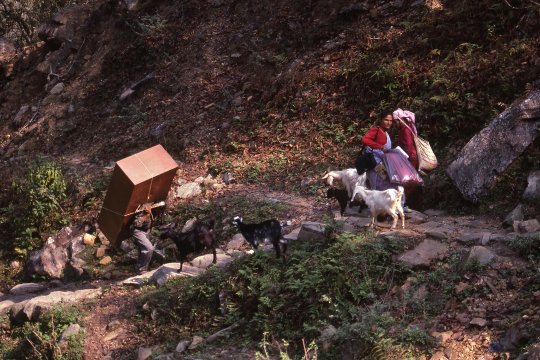 |
| 255. But they were no obstacle to the porter delivering this wardrobe -- a wedding present for a couple about to be married. |
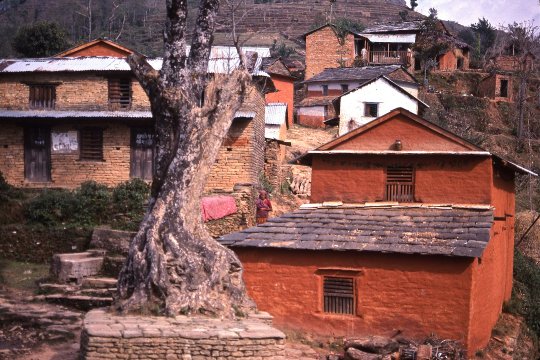 |
| 257. The main street of the village was lined with business enterprises, in which commercial and residential functions were combined. [Video Extract 14] |
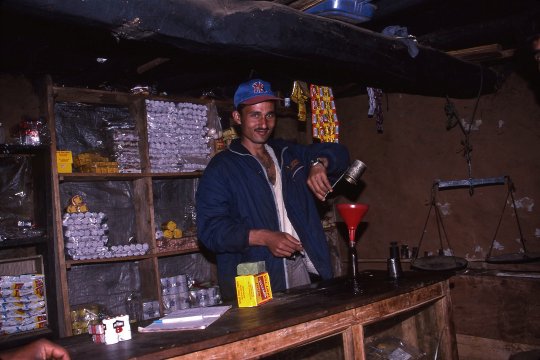 |
| 258. There was a general store that sold kerosene (for lamps), grain, toilet articles, and a range of hardware items, including batteries for torches and radios. |
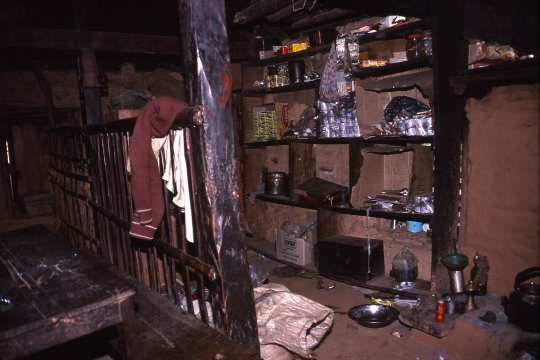 |
| 259. The owner of the general store and his family lived, cooked, and slept at the other end of the room. |
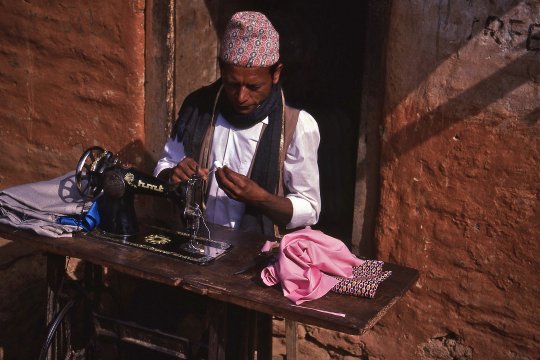 |
| 261. Her family owned another room next door which they rented to a tailor, who lived at the back of his shop but worked outside whenever possible. |
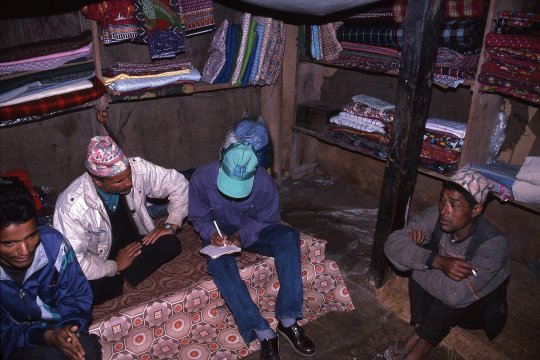 |
| 263. Tailor s here do not sell cloth, though. This is purchased from another small shop. |
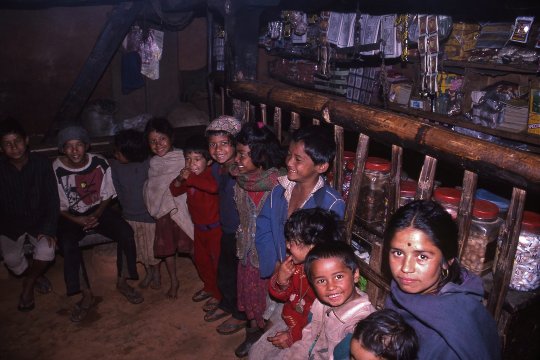 |
| 264. The owners of the sweet shop popular with school children also lived in the room where they worked. Their’s was a two-story building, however, and a farmer and his family lived upstairs. |
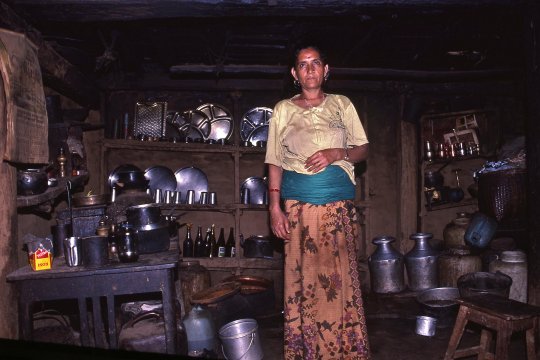 |
| 265. The woman who operated this liquor store and bar also lived where she worked. |
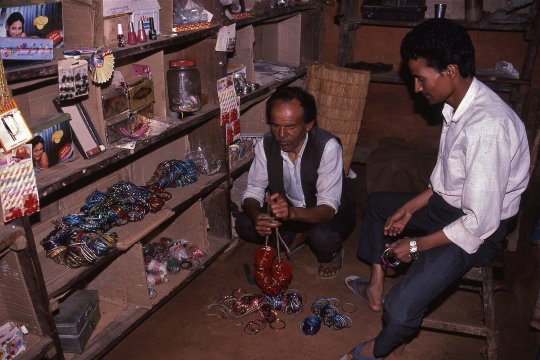 |
| 266. This man sold beauty products -- bangles, fancy tikas, nail polish, hair clips and such like. |
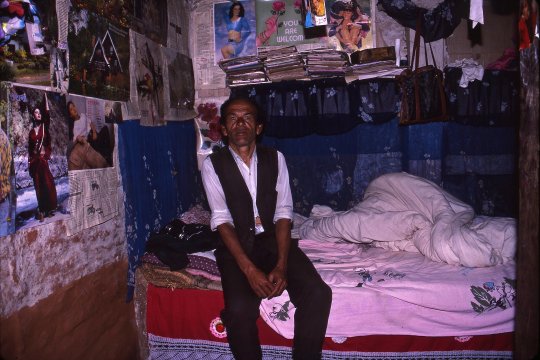 |
| 267. His sleeping space was suitable decorated with pin-ups but far more modest than those popular in America or Europe. |
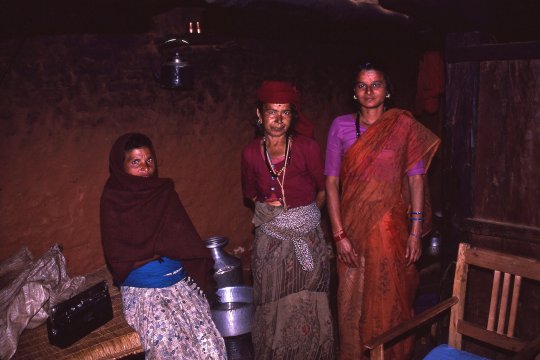 |
| 268. The other services available in Ramja included a clinic which provided advice, to women mostly, and some basic medications. |
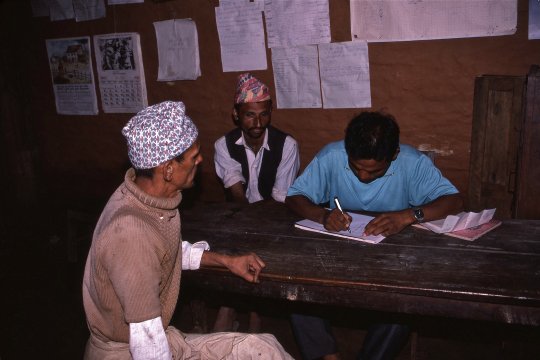 |
| 269. In addition to a small post office, a government veterinary officer from Pokhara was also based in the village. |
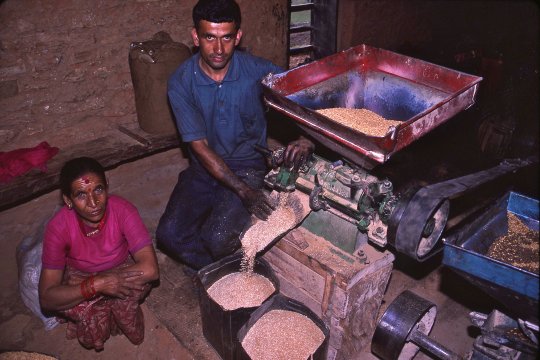 |
| 270. Within walking distance there was a small mill now, in which grains could be turned into flour -- corn especially. |
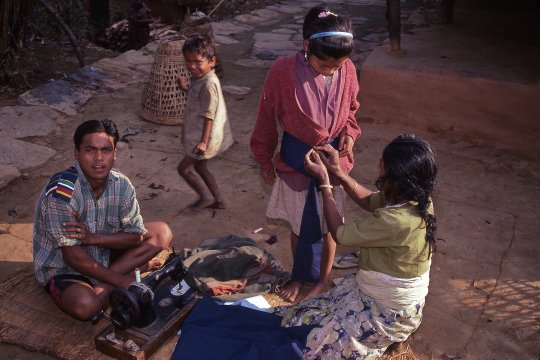 |
| 274. There were at least three more tailors. None of them owned a treadle machine like the man at the centre of the village, but at least two had machines. And some worked by hand. |
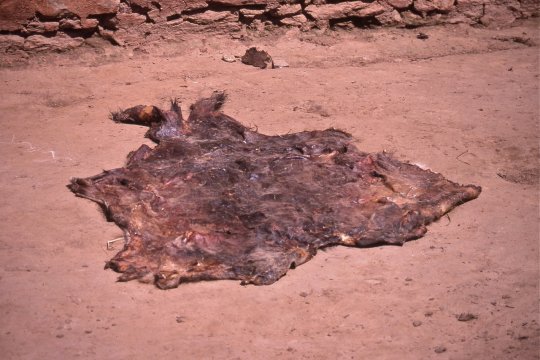 |
| 277. I never saw a leather worker in Ramja, but I did meet one outside a Gurung village. This skin was being tanned, but it is such a despised craft that no one wanted to be photographed near it. |

![]()
Text, photos and recordings
by John Tyman
Intended for Educational Use
Only.
Contact Dr. John Tyman at johntyman2@gmail.com
for more information regarding
licensing.
![]()
www.hillmanweb.com
Photo processing, Web page layout,
formatting and hosting by
William
Hillman ~ Brandon, Manitoba ~ Canada